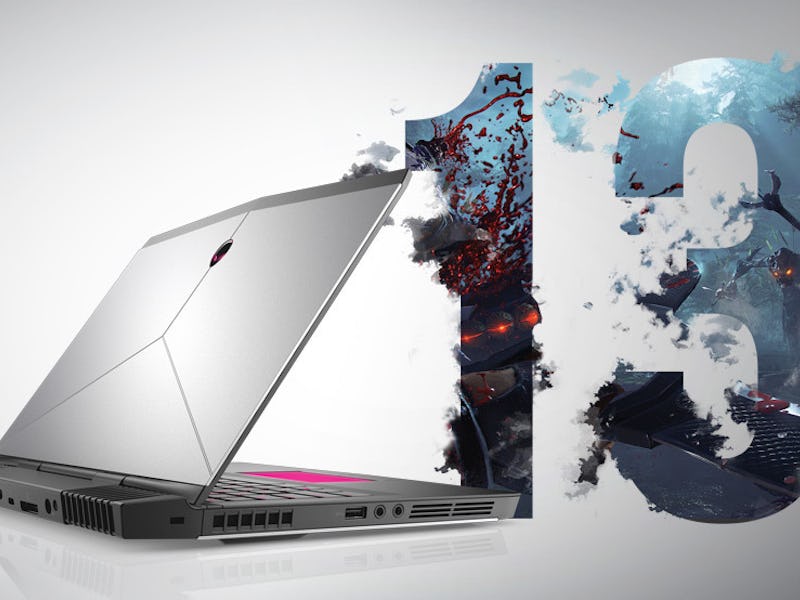The New Alienware 13 Gaming Laptop Is a VR Unicorn
VR without the price gouging.

Forget those ridiculous virtual reality backpacks: Alienware created a new 13-inch laptop that should appeal to anyone who wants to experience VR on the go. Now, instead of having to use a VR headset connected to a desktop PC, people can buy a laptop that’s powerful enough to handle VR, without breaking the bank.
Those two concepts seem incongruous. Building a PC that can handle VR headsets like the Oculus Rift is no easy feat — despite CEO Brendan Iribe’s claim that $700 will get you an Oculus-ready PC, most people have to spend much more than that to hop aboard the consumer VR train at this early stage.
Yet the new Alienware 13 manages to bridge that gap. It doesn’t cost $700 — this isn’t Xiaomi’s $750 Mi Notebook Air — but its $1,200 starting price is comparable to other laptops with similar capabilities.
Alienware isn’t gouging people interested in VR — it’s bringing VR-ready devices to more people.
That makes the new Alienware 13 an important product in VR’s development. Trying to experience VR right now can be an expensive prospect: The headsets often cost around $700. Spending more on a PC that can handle VR compounds the problem.
Many VR headsets also have portability issues. Because they require a powerful computer to function, they are restricted either to wherever a desktop PC sits or to people willing to buy a “backpack PC” that trades its owner’s dignity in exchange for making VR just a little less stationary.
A backpack virtual reality kit.
Companies like Facebook (which owns Oculus) are trying to address those limitations with stand-alone headsets. But those aren’t likely to debut anytime soon, which leaves gaming laptops as the best option for people who want to use their VR headset on the go, unless they’re willing to settle for lesser smartphone VR.
These points are moot if the Alienware 13 is a disappointment, but early reviews state the opposite: PCWorld and Laptop both gave it favorable reviews. (The biggest complaint seems to be that it gets a little hot sometimes.)
A Dell illustration showing the difference between the OLED and LCD screen output.
Besides its ability to power VR headsets, the new Alienware 13 also has an OLED display that promises to offer more “vivid and lifelike colors” by using increased contrast and truer blacks than similar LCD displays. The image above highlights the difference between an OLED display’s “true-to-life” colors and how washed out the LCD panel looks in comparison. (The OLED screen is an optional upgrade.)
This means the question isn’t “How do I buy a laptop that can handle VR?” so much as it is, “Do I want to buy a VR headset to go with my gaming laptop?” The new Alienware 13 is comparable in price to many Windows ultrabooks (thin, light computers) and MacBooks. It’s a little chubbier — it weighs about five pounds — and the battery is reportedly short-lasting. The components are top-notch and the design is bold.
The future of VR is headsets that don’t cost hundreds of dollars, don’t need to be connected to a powerful computer to work, and don’t look like discarded Tron costumes. Until that future comes, though, devices like the new Alienware 13 will have to do.
And if you absolutely must get a backpack, know that Dells sells an Alienware “Vindicator” backpack: “Designed to impress, the Alienware Vindicator Backpack boasts an extremely durable exterior with room in its 3 main compartments to protect your goods.”